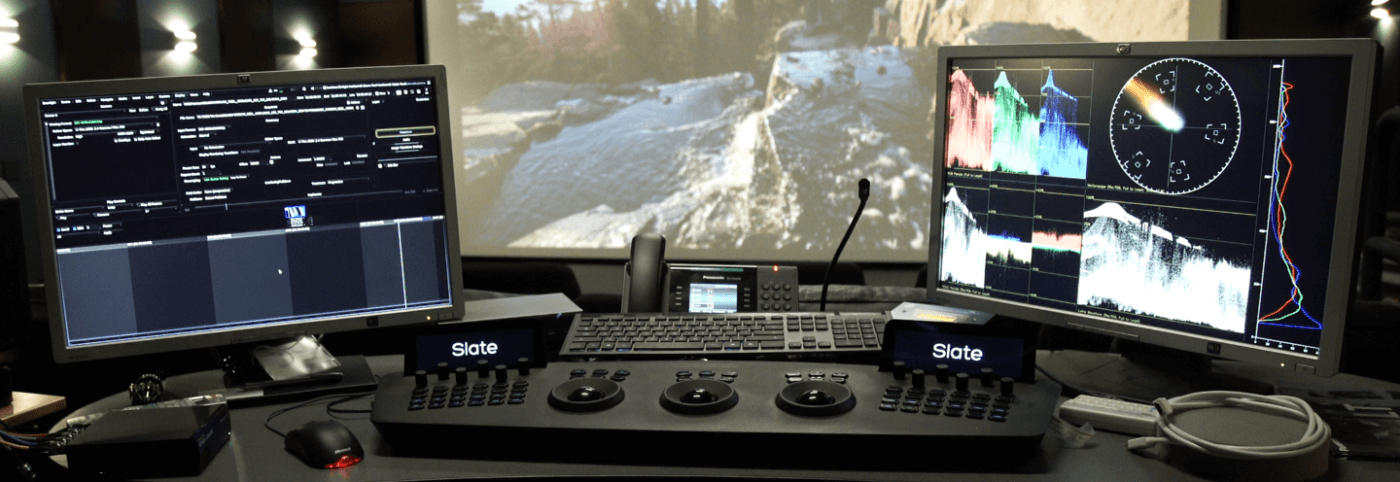Ultra HD Blu-ray Disc sets a new standard for Ultra High Definition picture and audio quality in the home. With four times the resolution of 1080p Full HD, High Dynamic Range for striking contrast, more intense color and uncompressed sound, Ultra HD Blu-ray is the ultimate movie watching experience.
Ultra HD Blu-ray supports resolutions up to 3840 x 2160, as well as High Dynamic Range (HDR) and higher frame rates (up to 60 frames per second).
Ultra HD Blu-ray provides as many as 7.1 channels of uncompressed surround sound for crystal-clear audio entertainment, and also supports object-based immersive sound, such as Dolby Atmos and DTS:X.
The name Blu-ray comes from the fact that the laser beam which reads the data from Blu-ray and Ultra HD Blu-ray Discs is blue, instead of the red beam used in DVDs and CDs. The blue laser is at the heart of all Blu-ray Disc technology (i.e. blue ray of light)
Ultra HD is the next generation standard for video entertainment. For the sharpest, clearest picture, Ultra HD has a resolution of 3,840 x 2,160 pixels (also known as 4K resolution). That’s four times the 1,920 x 1,080 pixels found in a standard Full HD TV.
But it’s not just about pixels. Ultra HD also supports High Dynamic Range (HDR). Dynamic range is the difference between the brightest whites and the darkest blacks on screen. HDR means that scenes with high contrast can be shown with much greater clarity and detail.
Ultra HD also supports Wider Color Spectrum. This provides a greater range of brighter, more vivid colors – more than twice the color range of current Full HD TVs.
High Dynamic Range represents an expanded range of both color and contrast, providing an image where there’s a greater difference between the brightest whites and the darkest blacks on screen.
HDR means that scenes with high contrast can be shown with much greater clarity, detail, color and depth.
DVDs offer 4.7Gb of storage, whereas Blu-ray and Ultra HD Blu-ray increases this capacity by five to 20 times – allowing discs to store the higher volumes of data needed to support Full HD and Ultra HD viewing. This is due to the blue laser and improved lens specifications, allowing for a much smaller focus laser beam which enables the recording of much smaller and higher density pits on the discs.
Immersive sound refers to new “3D” surround sound formats which include speakers at different heights – for example, in the ceiling – to provide an even more immersive surround sound experience. Blu-ray and Ultra HD Blu-ray support immersive sound formats such as Dolby Atmos and DTS:X.
Wide Color Spectrum allows Ultra HD Blu-rays to display over 75% of the visible color spectrum, producing a more vivid, lifelike image. Wide Color Spectrum can display twice the color range of current digital TVs.
4K Ultra HD is about more than just resolution. The format also supports High Dynamic Range (HDR) and Wide Color Spectrum, offering a greater range of brighter, more vivid colors than ever before. It also supports progressive frame rates of 24, 25, 50 and 60 frames a second, enabling smoother and more realistic motion.
Yes – Recordable Blu-ray Discs (BD-R) are available for storing data and video. BD-R requires a dedicated Blu-ray recorder or computer disc drive.

